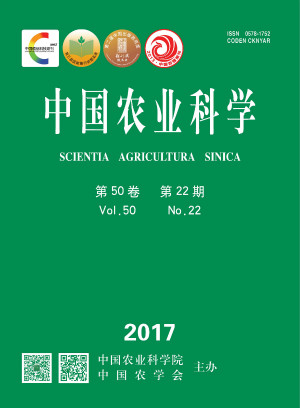-
Variation of Winter Wheat Grain Zinc Concentration and Its Relation to Major Soil Characteristics in Drylands of the Loess Plateau
- SHE Xu, WANG ZhaoHui, MA XiaoLong, CAO HanBing, HE HongXia, WANG Sen
-
Scientia Agricultura Sinica. 2017, 50(22):
4338-4349.
doi:10.3864/j.issn.0578-1752.2017.22.010
-
 Abstract
(
423 )
Abstract
(
423 )
 HTML
(
9 )
HTML
(
9 )
 PDF (440KB)
(
361
)
PDF (440KB)
(
361
)
 Save
Save
-
References |
Related Articles |
Metrics
【Objective】 In dryland of the Loess Plateau, winter wheat grain zinc (Zn) concentration is usually very low in most areas, but it still varied a lot among different locations or fields. Clarification of the causes of grain Zn variation is essential for improving wheat Zn nutrition and grain Zn biofortification. 【Method】 During 2014-2015 and 2015-2016, both soil and wheat grain samples were collected from 379 randomly selected rain-fed fields of Shanxi, Shaanxi, and Gansu provinces, where wheat is widely planted. Pearson correlation was used to investigate the relationships between wheat grain Zn concentration and the selected soil characteristics. 【Result】 The wheat grain Zn concentration ranged from 12.2 mg·kg-1 to 50.7 mg·kg-1 among different fields. The Pearson correlation analyses showed that, grain Zn concentration was significantly and negatively correlated with soil moisture, available Fe in all 0-100 cm layers, soil pH, available P in most soil layers, and available Mn and Cu in top soil layers. While wheat grain Zn concentration was significantly and positively correlated with soil nitrate, available K, and available Zn in 0-20 cm layer. Moreover, grain Zn was found no correlation with soil organic matter, total N in 0-100 cm layers, and ammonium in most soil layers. At maturity, 0-100 cm soil moisture in the fields of high Zn groups (mean = 39.2 mg·kg-1) was 8.2%, and 23% lower than that in the fields of low Zn groups; 0-20 cm soil pH in the fields of high Zn groups was 8.3, and 1.4% lower than that of low Zn groups; and soil available P, available Fe, available Mn, and available Cu of high Zn groups were 12.1, 3.2, 10.6, and 1.0 mg·kg-1, and 21%, 37%, 6%, and 33% lower than that in low Zn groups, respectively. However, soil nitrate, available K, and available Zn of high Zn groups were 23, 150, and 0.54 mg·kg-1, which were 246%, 27%, and 35% higher than that of low Zn groups, respectively. 【Conclusion】 Large wheat grain zinc variation was found among different areas and fields of the Loess Plateau, and it was mainly affected by soil characteristics including moisture, pH, nitrate, available P, available K, and available Fe, Mn, Cu and Zn, in which moisture and available Fe were more important. Optimizing agronomic water and nutrient management to increase soil water, N, K, and Zn supply capacity, and to some extent to decrease soil available P, and available Fe Mn and Cu without yield loss, should be potential measures for biofortification of wheat grain Zn on the Loess Plateau.









